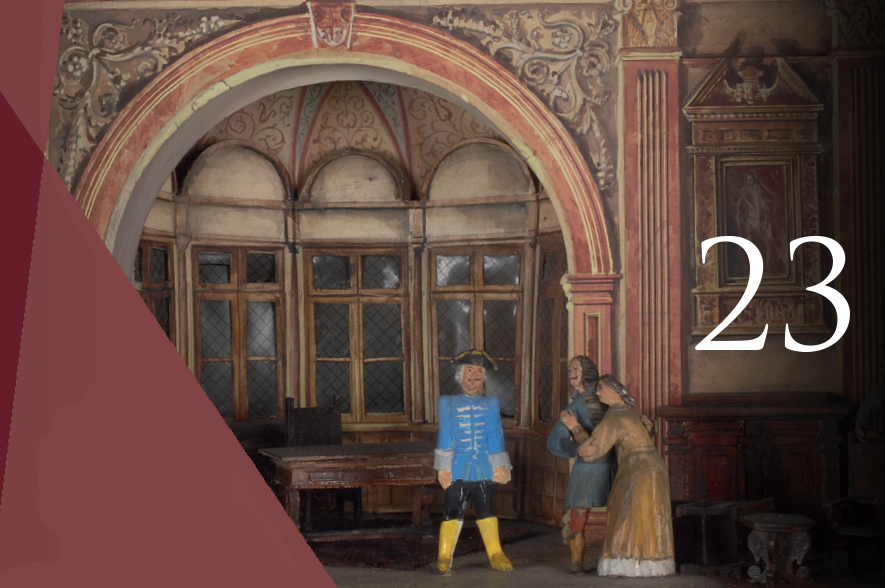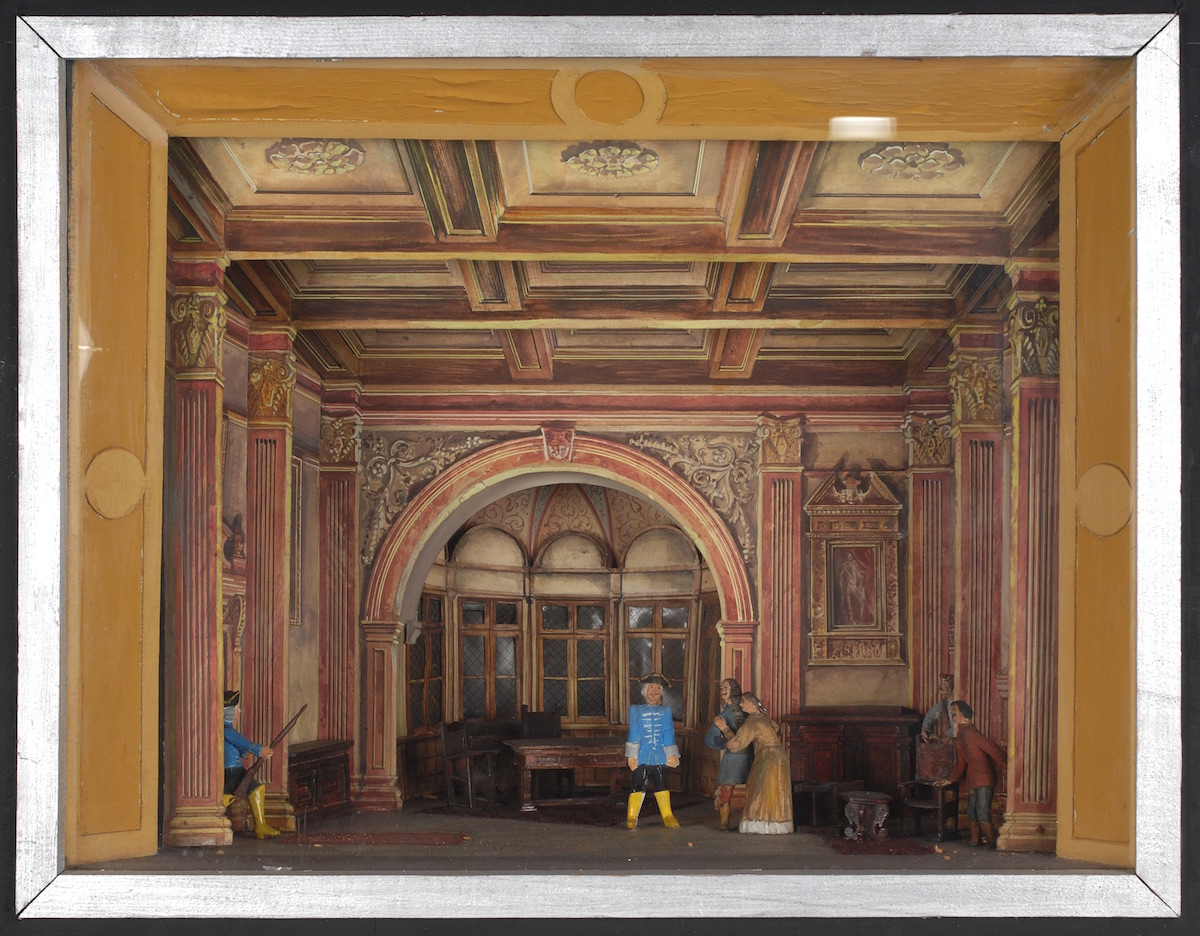
Szigligeti Ede legújabb színművét 1848. november 4-én hatalmas sikerrel mutatta be a Nemzeti Színház – négy nap alatt háromszor, zsúfolt házak előtt került színre. „A közönség újra él e darabban. Minden helyzete, minden szava hű a múlthoz és igaz a jelenben… Mikor a Rákóczi-induló megszólal a távolban, a tömeg felordít, minden arc ragyog, minden szem sír, minden kéz tapsol vagy oldalához kap és fegyverét keresi” – írta az Életképek 1848-ban. Kerényi Ferenc arra is rámutatott, hogy a fiatal Rákóczi mondatát – „Én? a jó császár ellen fegyvert fogjak?” – viharos derültség fogadta, Zrínyi Ilona buzdító szavait pedig „felzajgó lelkesedés” kísérte.
Stage model of the performance Francis II Rákóczi’s Imprisonment by Ede Szigligeti at the National Theatre in 1848
Ede Szigligeti’s newest play was put on with great success on 4 November 1848 at the National Theatre. It was performed three times during four days in front of sold-out houses. Rákóczi was a Hungarian nobleman and leader of the anti-Habsburg uprising and war of independence between 1703–1711. The contemporary audiences were obviously invigorated by the parallelisms between the plot of the play and the war of independence they were fighting against also the Habsburg rule in 1848–1849. ’The audience lives again in this play. All the situations, all its words are truthful to the past and true in the present. When the Rákóczi march starts in the background the audience bursts out in shouts, all faces shining, all eyes in tears, all hands clapping or reaching for their weapons.’ – wrote the magazine Életképek in 1848. Theatre historian Ferenc Kerényi also pointed out that the sentence by the young Rákóczi – “Me? To take arms against the good emperor?” – was taken with roars of laughter and bursting enthusiasm.

